15
The author perfected this article on January 3, 2020
Abstract
This paper is mainly about the process technology for semiconductor laser and its working as well as the applications. Semiconductor Laser refers to the semiconductor material as the working substance of the laser, also known as semiconductor laser diode (LD), is a laser developed in the 1960s. There are dozens kind of semiconductor's laser working substance, such as gallium arsenide (GaAs), cadmium sulfide (CdS), etc. The main incentive methods are electric injection, optical pump and high-energy electron beam excitation. Semiconductor lasers have evolved from their initial low temperature (77K) operation to continuous operation at room temperature. They have evolved from homojunction to single heterojunction, double heterojunction, quantum well (single and multiple quantum wells) and many others.Semiconductor lasers are rapidly evolving due to their wavelength expansion, the emergence of high-power laser arrays, and the availability of compatible microprocessor-controlled, fiber-guided and laser energy parameters.
Laser Diode Explained for Beginners
Catalogs
I Advantages and Disadvantages of Semiconductor Lasers | 1. Advantages of Semiconductor Lasers |
2. Disadvantages of Semiconductor lasers | |
II Driving Method of Semiconductor Lasers | |
III Working Principle of Semiconductor Lasers | 1. Generation Principle of Semiconductor lasers |
2. Operating Characteristics of Semiconductor Lasers | |
3. Working principle of Semiconductor Lasers | |
IV Process Technology of Semiconductor Lasers | |
V Commonly used Semiconductor Laser Applications | |
VI Book Recommendation | |
I Advantages and Disadvantages of Semiconductor Lasers
Semiconductor lasers are small in size, light in weight, low in cost and selectable in wavelength. Their applications are in clinical, manufacturing and military applications, and the progress made especially in high-power semiconductor lasers is the most prominent.
1. Advantages of Semiconductor Lasers
With a small size, light weight, high reliability, long life, low power consumption, in addition to that the semiconductor laser uses a low voltage constant current power supply, so the power failure rate is low, and it's safe to use with low maintenance costs. Therefore, the field of application is expanding. Currently, the number of semiconductor lasers used in all the first laser, some important applications of other lasers used in the past, has gradually been replaced by semiconductor lasers. Its applications include optical storage, laser printing, laser phototypesetting, laser ranging, bar code scanning, industrial detection, test and measurement equipment, laser display, medical equipment, military, security, field detection, Laser level and a variety of marking line positioning.
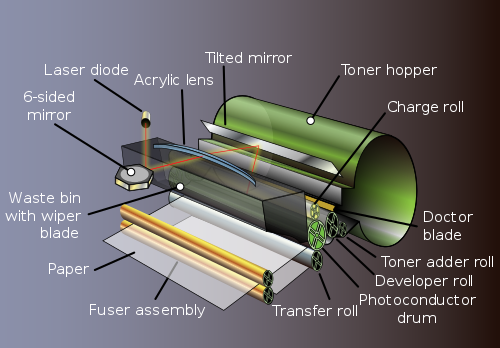
Diagram of a Laser Printer
2. Disadvantages of Semiconductor Lasers
Laser performance is affected by temperature, and the beam divergence angle is large (usually between a few degrees to 20 degrees), so the directionality, monochromaticity and coherence are so poor. However, with the rapid development of science and technology, the performance of semiconductor lasers has reached a very high level, and the beam quality has also been greatly improved. Semiconductor optoelectronics with semiconductor lasers as the core will make greater progress and play a bigger role in the 21st century information society.
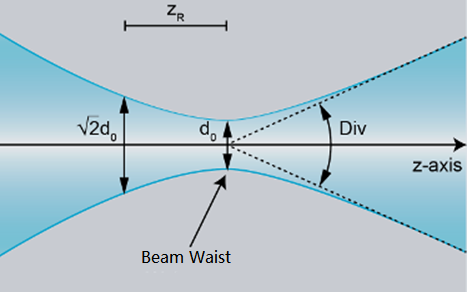
The divergence falf angle in x and y is defined as θ = Div/2. 2
II Driving Method of Semiconductor Lasers
The semiconductor laser excitation method usually uses the current injection form. When the injection current is greater than the threshold current, the radiation power rapidly increases with the increase of the current. Therefore, the output optical power of the semiconductor laser can be adjusted by changing the injection current of the semiconductor laser. Semiconductor laser control, usually using automatic control method, which includes constant current control (ACC), constant power control (APC), constant voltage control (AVC).
In the APC mode of operation, a small part of the laser power is received by a photodetector (PD) and converted into a monitor current, and the monitor current is changed by comparing the measured current through the APC feedback network with the set value through the current feedback of the measured current Closed-loop negative feedback control. When the laser output power is affected by temperature and other factors change, the negative feedback can control the optical power to make it stable.
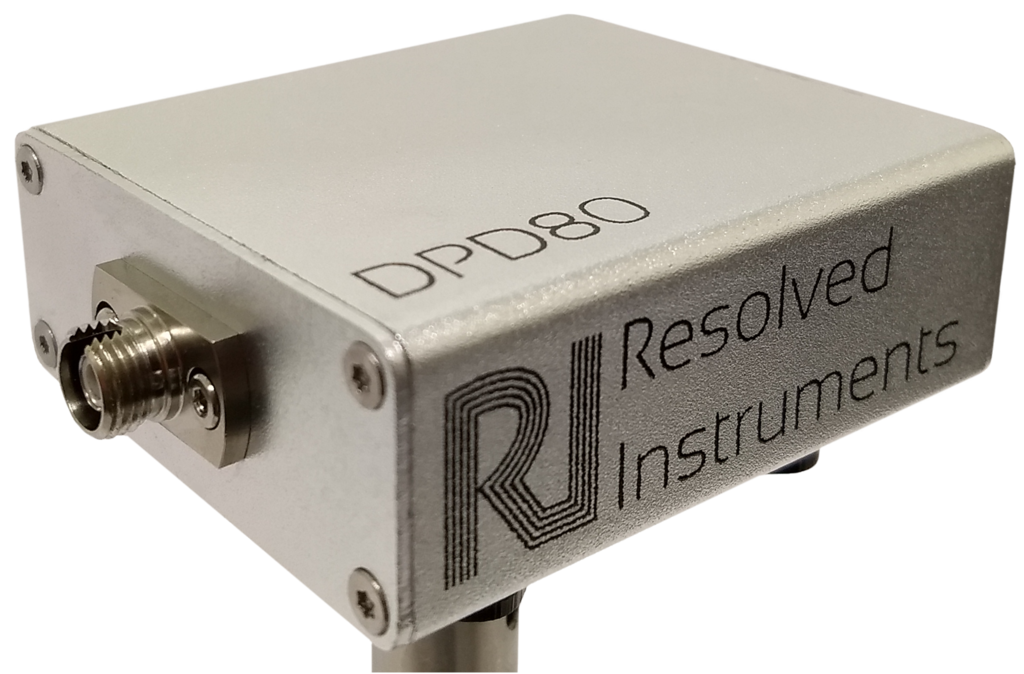
A Commercial Amplified Photodetector for Use in Optics Research
AVC is a simple and useful mode for a specific occasion. This mode can be used when the driving voltage of LD is required to be constant.
In ACC mode, the current sense feedback provides current control for the current driver, minimizing current drifting and maximizing LD output stability, and works better with temperature control.
Now commonly used semiconductor laser device with a constant current source, the main application of the FET's turn-on characteristics and the transistor symmetrical connection mirror constant current principle to achieve. To get a stable output, the injection current must be stabilized, which means that a constant current source is used.
III.The working principle of Semiconductor Lasers
1. Generation Principle of Semiconductor Lasers
Semiconductor laser is a coherent radiation source, to make it to produce laser, must have three basic conditions:
Gain conditions: the establishment of the inverse distribution of carriers in the lasing medium (active region). The electron energy in the semiconductor is composed of a series of energy bands close to a continuous level, so in In order to realize the inversion of the number of particles in the semiconductor, the number of electrons at the bottom of the conduction band at the high energy state must be much larger than that at the bottom of the energy band at the bottom of the energy band. It generates by injecting the necessary carriers into the active layer. Inspire Energize electrons from lower energy valence bands to higher energy conduction bands. When the number of particles in the inverted state of a large number of electrons and holes complex, they have stimulated emission.
In order to obtain the coherent stimulated radiation actually, the stimulated radiation must be fed back several times in the optical resonant cavity to form the laser oscillation. The resonant cavity of the laser is formed by the natural cleavage plane of the semiconductor crystal as a mirror, No light out of that end coated with high anti-multilayer dielectric film, and coated with antireflection film. The F-p cavity (Fabry-Perot cavity) semiconductor laser makes it easy to utilize the crystal's natural cleavage plane perpendicular to the P-n junction plane to form an F-P cavity.
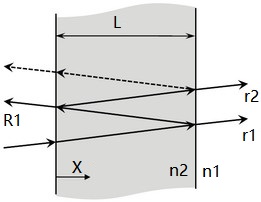
An example of a Fabry-Perot Cavity
In order to form a stable oscillation, the laser medium must be able to provide a sufficiently large gain to compensate for the optical loss caused by the resonator and the laser output from the cavity surface, thereby continuously increasing the light field in the cavity. This must be strong enough current injection, that is, sufficient number of particles reversed, the higher the degree of particle inversion, the greater the gain, which must meet certain current threshold conditions. When the laser reaches the threshold, light of a specific wavelength resonates in the cavity and is amplified, and finally the laser is formed and continuously output.
It can be seen that in semiconductor lasers, the dipole transitions of electrons and holes are the basic processes of light emission and light amplification. For the new type of semiconductor lasers, it is currently accepted that the quantum well is the fundamental driving force for the development of semiconductor lasers. Whether quantum wires and quantum dots can take full advantage of the quantum effect of the subject has been extended to this century. Scientists have tried to use self-organized structure in a variety of materials to produce quantum dots, and GaInN quantum dots have been used in semiconductor lasers. In addition, scientists have also made quantum-cascade lasers of another type of stimulated emission process based on transitions from a sub-level of the semiconductor conduction band to a lower level of the same band, since only The electrons in the conduction band are involved in this process, so it is a unipolar device.
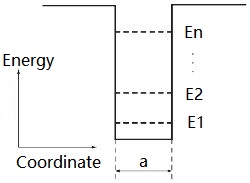
Schematic Representation of a Quantum Well
2. Operating Characteristics of Semiconductor Lasers
(1) Threshold Current
When the current injected into the p-n junction is low, only spontaneous emission occurs and the gain increases as the current value increases. At the threshold current, the p-n junction generates laser light. Several factors that affect the threshold:
The greater the crystal doping concentration, the smaller the threshold.
The loss of the resonator is small, such as increasing the reflectivity, the threshold is low.
Because of the junction of semiconductor materials, the heterojunction threshold current is much lower than the homojunction. At present, the threshold current of homojunction at room temperature is more than 30000A / cm2; the single heterojunction is about 8000A / cm2; the double heterojunction is about 1600A / cm2. Now double heterostructures have been made at room temperature continuous output of dozens of milliwatts of semiconductor lasers.
The higher the temperature, the higher the threshold. Above 100K, the threshold increases with the third power of T. Therefore, the semiconductor laser is best to work at low temperature and room temperature.
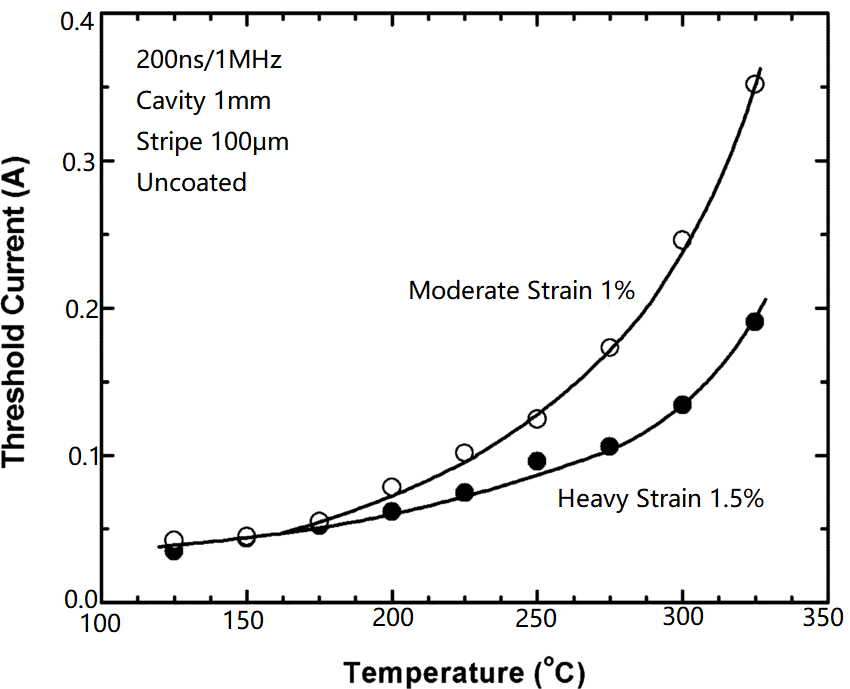
Temperature Dependences of the Laser Threshold Current for Moderately and Heavily Strained Lasers
(2) Directionality
Due to the short resonator of the semiconductor laser, the laser directivity is poor, and the divergence angle is the largest in the vertical plane of the junction up to 20 ° -30 °; in the horizontal plane of the junction is about 10 °.
(3) Efficiency
Quantum efficiency η = number of photons emitted per second / number of electron-hole pairs per second to reach the junction 77K, GaAs laser quantum efficiency of 70% -80%; 300K, down to about 30%. Power Efficiency η1 = Optical Power of Radiation / Electric Power Added to a Laser Due to various losses, current double heterojunction devices have η1 up to 10% at room temperature and can reach 30% -40% only at low temperatures.
(4) Spectral Characteristics
Due to the special electronic structure of semiconductor materials, the stimulated recombination radiation occurs between the energy band (conduction band and valence band), so the laser linewidth is wide, GaAs laser, the spectral line width at room temperature is about a few nanometers, we can see its monochrome Poor sex. The peak wavelength of the output laser is 840 nm at 77K and 902 nm at 300K.
3. Working Principle of Semiconductor Lasers
In the above contents,we have showed detailed about what's the principle of semiconductor laser, now let's see a video directly to obtain or strenghthen the knowledge of semiconductor laser we just learned.
Working Principle of Semiconductor Laser in Detail
IV Process Technology of Semiconductor Lasers
The manufacturing process of semiconductor lasers has many similarities with the process of semiconductor electronic devices in principle. The birth of semiconductor lasers need to go through many manufacturing process steps to achieve. Although the structure of various semiconductor laser design, manufacturing process there is a big difference, but they are similar.
Basic technology: Substrate selection and preparation; Epitaxial growth; Corrosion; Diffusion, Electrode fabrication; Cleavage or dicing; Racking tube; Aging screening; Package coupling. Here are some of the major processes:
1. The substrate of choice is the first step in device manufacturing. The substrate is the substrate for epitaxial growth. Since the quality of the epitaxial growth is significantly affected by the crystal quality of the substrate, the substrate must account for the lattice matching (and sometimes also the buffer layer) with the heterojunction forming material; have the specified crystal orientation and a certain range of deviations; Appropriate doping concentration; a certain thickness; surface and internal defect density is low, the surface smooth and bright, no scratches.
2. Epitaxial growth process is the core of semiconductor laser manufacturing process, it determines the device performance and yield. Epitaxial growth is the growth of multi-layered on the substrate - yuan or multiple compounds or alloys (solid solution), so that it forms a homojunction or heterojunction. Common epitaxial growth process has LPE, MOCVD, MBE and so on.
3. Ccorrosion is based on the structure of the laser design and materials used to prepare the necessary various shapes of the important process. It points wet (chemical) and dry etching (plasma etching, reactive ion etching, magnetic resonance resonance etching, etc.) two, each with its own scope of use. Thousand-law corrosion is mainly used for the fine size of fine etching.
4. Proliferation is a very mature and growing semiconductor manufacturing technology. The use of diffusion technology can change the electrical and optical properties of semiconductor materials.
5. Electrode production is also known as ohmic contact , its good or bad quality not only affect the device power conversion, but also. Directly affect the device reliability and life expectancy.
6. Cleavage is the technique of cleaving an epitaxial wafer after contact fabrication into a single chip and obtaining a parallel reflection cavity (ie, F-P cavity).
7. the welding is to test qualified die with solder sintered on the heat sink. There are two types of welding methods: vacuum welding and forming gas welding, which are mainly selected according to the nature of the solder and the process. When welding, it is necessary to keep the bond firmly, sticky to be uniform, but the solder can not be too much, the temperature can not be too high, in order to prevent the solder overflow undersurface destruction cleavage surface, or even defile the active area.
8. The bond is to handle the gold or gold foil with ultrasonic welding or thermocompression bonding, or a combination of both methods of the electrode connected to the die for current injection leads.
9. In order to improve reliability, the package should be all-metal, airtight seal. In some cases, the tube case is also equipped with temperature-controlled, light-controlled sensors and semiconductor coolers, and sometimes with driver circuits, all depending on the specific requirements. Through the above process can be practical semiconductor laser device.
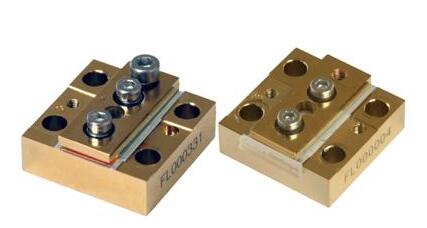
Semiconductor Laser Metallization Package
V Commonly used semiconductor laser applications
Quantum Well Laser has important applications in the laser processing of precision mechanical parts, and has also become the most ideal and highly efficient pump light source for solid-state lasers. Due to its advantages of high efficiency, high reliability and miniaturization, solid-state lasers are constantly being updated - high-power semiconductor lasers are also used in the printing and medical industries. In addition, short wavelength lasers are used for optical readout, such as long wavelength lasers (in 1976, GaInAsP / lnP realized long wavelength lasers) for optical communications. Since NaKamura implemented GatnN / QaN blue lasers, visible light semiconductor lasers have found widespread use in optical disc systems such as cD players, DVD systems and high-density optical memories. Visible surface emitting lasers have very important applications in optical disks, printers and displays. In particular, red, green and blue emitting lasers are more widely used.
Blue-green semiconductor lasers are applied for underwater communications, laser printing, high-density read and write information, deep water detection and used in large-screen color display and high-definition color TV. In summary, visible light semiconductor lasers have a wide range of applications as light sources for color displays, optical storage read and write, laser printing, laser printing, high density optical disk storage systems, bar code readers, and pump sources for solid state lasers use. A new type of laser using quantum cascade lasers is used in the field of environmental testing and medical examination.
In addition, since semiconductor lasers can achieve wavelength tuning by changing the magnetic field or adjusting the current, and laser output of a narrow line width can be obtained, high-resolution spectroscopy can be performed using a semiconductor laser. Tunable lasers are an important tool in laser spectroscopy that develops rapidly as the material structure is studied. High-power mid-infrared (3-5 post,) LD has a wide range of applications in infrared confrontation, infrared illumination, laser radar, atmospheric window 121, free air and space communication, atmospheric monitoring and chemical spectroscopy.
Vertical cavity surface emitters from green to UV have found wide applications in optoelectronics such as ultra-high density, optical storage. Near-field optical solutions are considered as an important means of achieving high-density optical storage. Vertical cavity surface emitting lasers can also be used in full color flat panel displays, large area emission, illumination, optical signals, light decoration, UV lithography, laser processing and medical treatment.
As mentioned above, since the early 1980s, semiconductor lasers have been successfully developed and put into practice as DFB dynamic single longitudinal mode lasers, and the emergence of most well and strained quantum well lasers. High power lasers and their arrays , A series of major breakthroughs have been made in the development of visible lasers, the realization of surface emitting lasers, the development of unipolar injected semiconductor lasers, etc. The application of semiconductor lasers has become more and more widespread. Semiconductor lasers have become the major component of the laser industry At present, it has become an indispensable and important foundation for all countries in developing information, communications, household appliances and military equipment.
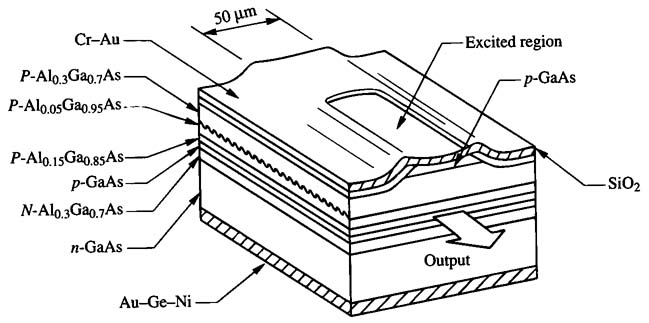
Structure of a GaAlAs Double Heterojunction DFB Laser
VI Book Recommendation
1. Semiconductor Lasers: Stability, Instability and Chaos
Discuss chaos synchronization between two lasers and the application to optical secure communication; fast physical number generation using chaotic semiconductor lasers for secure communication and development of chaos chips and their application.
--Junji Ohtsubo
2. Semiconductor Lasers: Fundamentals and Applications
Discusses photonic crystal lasers, high power semiconductor lasers and laser beams, and the use of semiconductor lasers in ultrafast pulse generation.
--Alexei Baranov, Eric Tournie
You May Also Like:
Transformer Manufacturing Processes
Features, Developemnt Trends and Disadvantages of Wireless Power Transfer
Ordering & Quality
| Photo | Mfr. Part # | Company | Description | Package | Qty |
|
A3P030-1QNG48I | Company:Microsemi | Remark:IC FPGA 34 I/O 48QFN | Package:48-VFQFN Exposed Pad |
A3P030-1QNG48I Datasheet |
In Stock:146 Inquiry |
Inquiry |
|
ICE65L04F-TCS63I | Company:Lattice | Remark:IC FPGA 48 I/O 63WLCSP | Package:BGA63 |
ICE65L04F-TCS63I Datasheet |
In Stock:5759 Inquiry |
Inquiry |
|
PIC12F675-E/MF | Company:Microchip | Remark:IC MCU 8BIT 1.75KB FLASH 8DFNS | Package:8-VDFN Exposed Pad |
PIC12F675-E/MF Datasheet |
In Stock:94 Inquiry |
Inquiry |
|
DS1233DZ-15+T&R | Company:Maxim Integrated | Remark:IC 4.125V NO PBR 15% SOT223 | Package:TO-261-4, TO-261AA |
DS1233DZ-15+T&R Datasheet |
In Stock:3228 Inquiry |
Inquiry |
|
UPSD3212CV-24U6 | Company:STMicroelectronics | Remark:IC MCU 8BIT 80KB FLASH 80TQFP | Package:TQFP80 |
UPSD3212CV-24U6 Datasheet |
In Stock:1200 Inquiry |
Inquiry |
|
MC9S12DG256MPVE | Company:NXP / Freescale | Remark:IC MCU 16BIT 256KB FLASH 112LQFP | Package:112-LQFP |
MC9S12DG256MPVE Datasheet |
In Stock:634 Inquiry |
Inquiry |
|
RHC2512FT150R | Company:Stackpole Electronics | Remark:RES SMD 150 OHM 1% 2W 2512 | Package:2512 (6432 Metric) |
RHC2512FT150R Datasheet |
In Stock:19360 Inquiry |
Inquiry |
|
MC9S12C32CPBE25 | Company:NXP / Freescale | Remark:IC MCU 16BIT 32KB FLASH 52LQFP | Package:52-LQFP |
MC9S12C32CPBE25 Datasheet |
In Stock:951 Inquiry |
Inquiry |
|
MC56F8245VLD | Company:NXP / Freescale | Remark:IC MCU 16BIT 48KB FLASH 44LQFP | Package:44-LQFP |
MC56F8245VLD Datasheet |
In Stock:765 Inquiry |
Inquiry |
|
P89LPC9361FDH518 | Company:NXP | Remark:P89LPC9361FDH518, NXP, Embedded - Microcontrollers | Package:28-TSSOP (0.173", 4.40mm Width) |
P89LPC9361FDH518 Datasheet |
In Stock:118 Inquiry |
Inquiry |